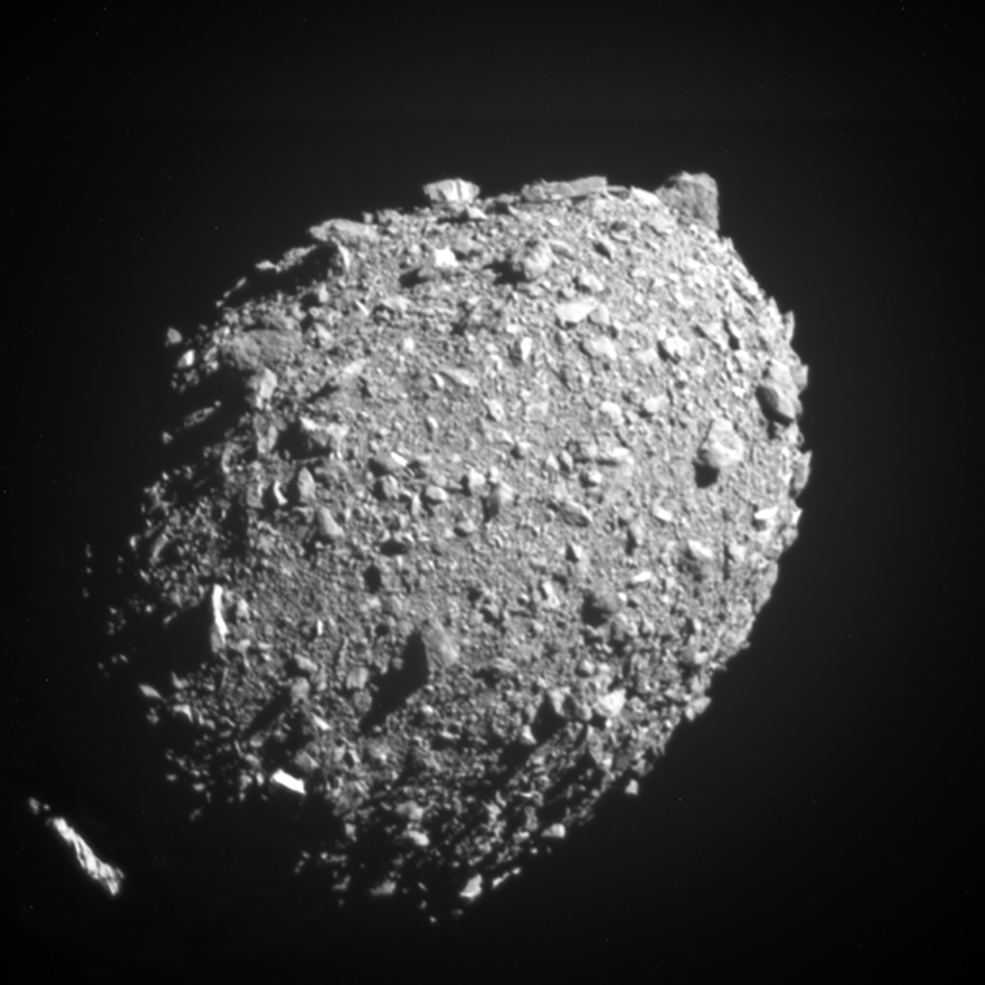Here’s one of the best videos we’ve seen of the last minutes of the Double Asteroid Redirection Test (DART) mission as it headed towards and slammed into the asteroid Dimorphos. This stabilized version of the last five-and-a-half minutes of images leading up to DART’s intentional collision with the asteroid was produced from NASA’s DART images. It was produced by the YouTube channel Spei’s Space News from Germany.
DART streamed these images from its DRACO camera back to Earth in real time as it approached the asteroid. This replay movie is 10 times faster than reality, except for the last six images, which are shown at the same rate that the spacecraft returned them. DRACO stands for Didymos Reconnaissance and Asteroid Camera for Optical navigation.
Below you can see the real-time views coming in to DART’s mission control at the Johns Hopkins Applied Physics Laboratory (APL) in Laurel, Maryland. The team can be seen cheering, clapping and giving each other high fives as the spacecraft performed its heroic duty, which was to intentionally collide with an asteroid in attempt to deflect it, a technique known as kinetic impact.
Dimorphos is a small asteroid moonlet, just 530 feet (160 meters) in diameter. It orbits a larger, 2,560-foot (780-meter) asteroid called Didymos. Neither asteroid poses a threat to Earth, and the impact should change the way Dimorphos orbits Didymos, making the duo the perfect target for this test. NASA says that DART’s impact demonstrates a viable mitigation technique for protecting the planet from an Earth-bound asteroid or comet, if one were discovered.
DART launched on November 24, 2021, and after 10 months of flying about 7 million miles (11 million kilometers through space, caught up with Dimorphos. DART weighed 1,260-pounds (570-kilograms) and crashed into the asteroid at roughly 14,000 miles (22,530 kilometers) per hour, which is expected to have slightly slowed the asteroid’s orbital speed.
The DART team has said they expect the impact to shorten Dimorphos’ orbit by about 1 per cent, or roughly 10 minutes; precisely measuring how much the asteroid was deflected is one of the primary purposes of the full-scale test. Some of the early indications from images taken by both ground-based and space telescopes are that the impact appeared to be larger than expected. More details from the telescopes will be coming out in the coming weeks and months, so it may be some time before we know precisely how much DART’s impact altered Dimorphos’ the asteroid’s orbit around Didymos.


Dimorphos appears to be a “rubble pile.” It’s about 170 meters in diameter. If something like that hit Earth, it would be cataclysmic. I guess data received from LICIACube over the next few weeks will be very revealing about what the DART impact has done to it.